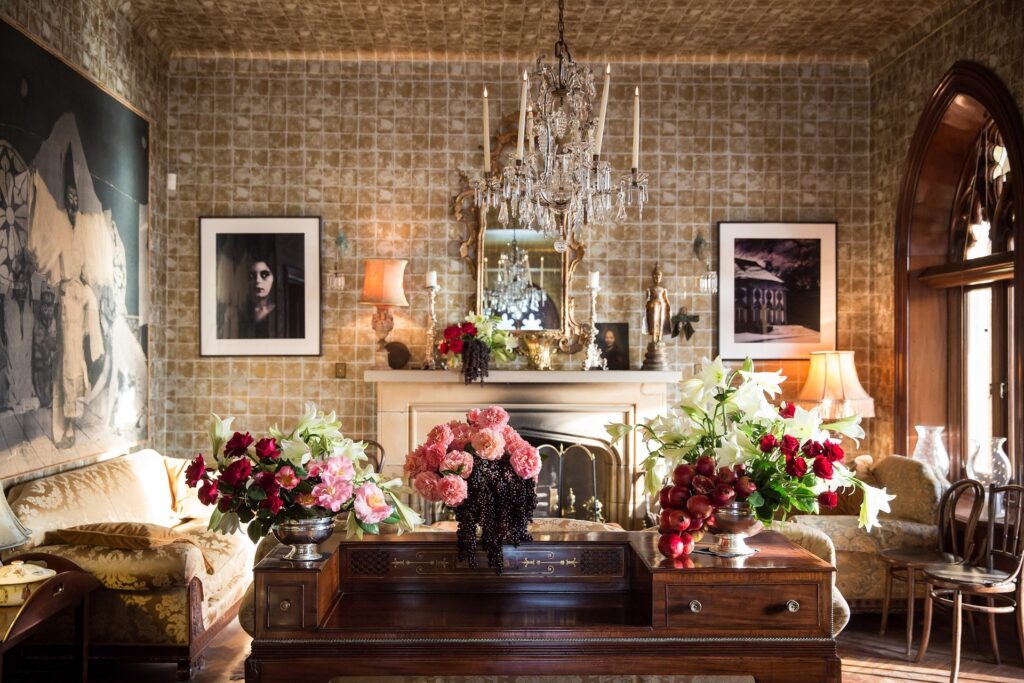As you begin to look at decorating your home there are many things to consider. What color are you going to paint your walls? Will your room have a theme? Once you’ve got your furniture in place a room begins to take its full shape. But the question remains what should you put on the walls? Sure, a gallery wall with photographs of your family is fun, but what about the other walls?
Why spend your time on the stock pieces you can find at big box stores? Sure, that artwork is easy to come by and is pleasing to the eye. But it looks just like the art your neighbor has. Visual art is meant to be an expression of yourself and your passions, so don’t settle for the same old artwork that anyone can buy.
As you begin your fine art collection for your home, there can be a lot of questions. Below you’ll find 5 reasons why you should look into fine art for your home. If you are ready to move past the infamous “Eat” sign for your kitchen, get ready to find the best art possible for your home.
Make Your List
Beginning an art collection can be easy if you know what you’re looking for. It can be more challenging if you just know you want art. Because artwork can come in many different varieties, sculptures, or paintings, for instance, you need to decide which areas of your home you re looking to highlight with your new artwork.
If you are looking to adorn your walls with creative pieces of artwork keep in mind that there are even wall sculptures on the market, which can help add texture and depth to any room and can be a real focal point. Don’t stress about finding the perfect pieces, when you see the art that inspires you it will be obvious.
What emotions are you hoping your new art brings to a room? Are you looking for something that will make your guests stop and think? Or are you specifically seeking out a piece that will coordinate (or compliment) with your color scheme?
As you peruse galleries, whether in person or online, start jotting down which pieces catch your eye. If you notice a theme: perhaps you seem drawn to watercolor paintings as an example, then make a note of that. Or, if you seem to gravitate towards a specific artist time and time again you may want to write the name down.
People tend to like what they like. One of the wonderful things about art is that it is subjective. While someone who lives with you or is going to help financially contribute to the purchase of your new fine art piece should get a say, choose the artwork that you love, and ignore any naysayers! If you appreciate a specific canvas, own it!
Take the list of what you’re looking for with you as you search. Many gallery owners can help point you in the right direction if they know what you’re looking for, including artists that have a similar style to people you’ve decided you like. Don’t be afraid to ask for recommendations from those who know the art world more intimately than you.
Investment or Not?

While some people seek out new and upcoming artist’s work to be at the forefront of art collecting, there is no reason you can’t buy the artwork that you prefer. Whether you hope to develop a massive collection of your own to invest in or you are looking for just one or two key pieces to enhance the style of your home, buying fine art should be fun!
Many artists are happy to have working relationships with patrons who enjoy their work, so if there is someone you feel drawn to, reach out, and make a connection. They may even be able to create a commissioned piece especially for you, using a subject matter or color scheme that you have chosen together.
Size Matters
You need to know that art pieces that are small tend to lost in a room. Take a regular 8 ½ x 11-inch piece of paper and put in on your wall. Most rooms will dwarf that paper and make it look tiny. So as you are shopping for the perfect fine art, don’t be afraid to aim big!
If you want your art to cover ⅔-¾ of your wall, which is a good rule of thumb, there is a formula to figure out what size you’re looking for. When you measure the height and width of your wall take the resulting measurements and multiple those by .57. That will give you the smallest dimensions of the artwork you should look for.
If you are overly concerned that a large piece of art is just not for you, or if a huge canvas is out of your price range, you can often put smaller pieces together in a way that will cover a larger amount of space. You want your new fine art to be showcased properly and not be missed.
There are obviously spaces and areas that are perfect for smaller works of art, so don’t worry if that small print or etching is more your style. Go right on ahead and cultivate your art collection with smaller works to be displayed in more compact areas of your home that need a sprucing up.
Location Matters
Don’t let your fine art sit in a closet or storage area, fine art should be displayed! Bu you will want to do so carefully. Did you know that original works of art are susceptible to being damaged by heat or sunlight? While having a stunning work over your mantel is your goal, if you’re regularly having a fire the heat could destroy your new art.
You will want to find a place in your home for your artwork to go where it won’t be in direct sunlight for any length of time or be prone to a lot of moisture or heat. A bathroom, for instance, is not a great location for a new and unique fine art piece. Sunlight can cause colors to fade and the UV light damages art quickly.
If you are going to take your new fine art to be framed you can opt for UV acrylic plexiglass which is coated especially to prevent sun damage. It is kind of like sunglasses for your art. When the artwork is protected properly it can be placed in an area that gets more sunlight. For another option, choose a sculpture that won’t fade!
Even caring for your art must be done with the utmost care. Most art simply requires being dry dusted. Cleaning products, even a damp cloth could damage the paint! If you find that your art needs to be cleaned more in-depth, it is important you take it to someone with the necessary restoration experience at a museum or a gallery.
Be sure when you hang your art you do it properly. Not only should the hangers be securely attached to the wall, but you also don’t want the mistake of hanging your artwork too high or low. There is an easy way to be sure that anything hanging on your wall is at the right eye-level height or about 57-60 inches from the ground.
You need to divide the height of the frame in two. Take that number and subtract the distance from the top of the frame to the hanging hardware the frame has then add this number to 57, 58, 59 or 60. Take your sum and measure from the floor up that resulting number of inches on the wall and mount your hardware there. Your art will now hang at a respectable eye level.
Conclusion

Finding the right fine art piece for your home collection doesn’t need to be difficult. Once you’ve narrowed in on what you’re looking for there are many options for art dealers and galleries that can help steer you in the right direction. Having fine art in your own home can inspire your own creativity or even help calm you when your days are stressful.
Displaying your new fine art in your home can become a talking point and you may even inspire your friends and neighbors to begin their own hunt for fine art. Once you start looking at one-of-a-kind fine art, you can never go back to boring box store prints.






